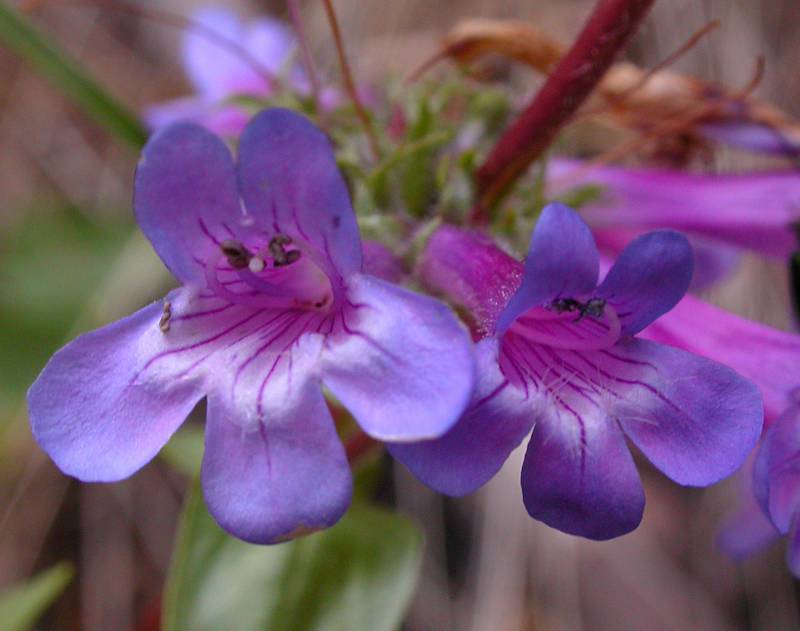Penstemon ovatus
Penstemon pruinosus
egg-leaf beardtongue, broad-leaved penstemon
Chelan beardtongue
Basal leaves opposite, clustered, petiolate, with ovate to sub-cordate blade up to 10 cm. long and half as wide, about equaling the petiole, serrate, hairy like the stem, especially along the mid-vein beneath;
cauline leaves sessile and clasping, more sharply serrate, nearly as large, but more broadly oblong, the upper ovate.
Leaves opposite, usually sharply serrate, sometimes most of them entire;
basal leaves well-developed, up to 10 cm. long and 2 cm. wide, the blades elliptic to ovate, equaling the petiole;
cauline leaves sessile, triangular-ovate to narrowly lanceolate, smaller than the basal leaves.
Inflorescence large and open, strongly glandular-hairy;
calyx 3-5 mm. long, broadly lanceolate, with parallel veins;
corolla blue, 15-22 mm. long, glandular-hairy on the outside, the raised portion of the lower petal pale blue and hairy;
corolla strongly bilabiate, the lower lip much the longer;
pollen sacs 0.8-1.1 mm. long, fully dehiscent and becoming opposite, nearly glabrous;
staminode bearded toward the recurved tip.
Inflorescence of several compact verticillasters;
calyx 3-6 mm. long, the 5 segments broadly lanceolate;
corolla deep blue or lavender, 11-16 mm. long, the tube slightly expanded, 2.5-5 mm. wide at the mouth, the throat paler and marked with guide lines, glandular-hairy externally, the raised portion of the lower lip bearded;
pollen sacs glabrous, dehiscent throughout and becoming opposite;
staminode with a bearded tip.
Capsule 4-6 mm. long.
Capsule 5-7 mm. long, glabrous.



